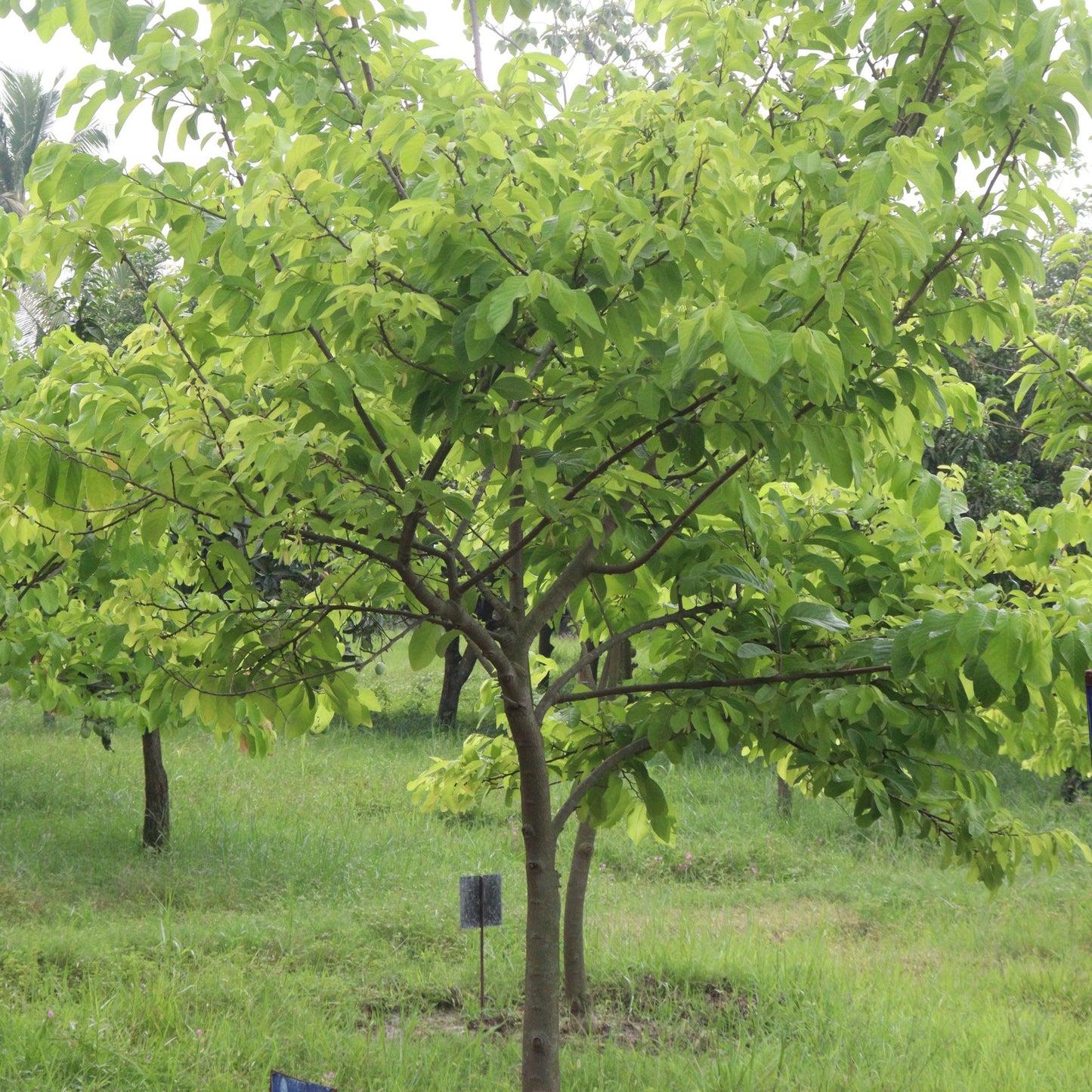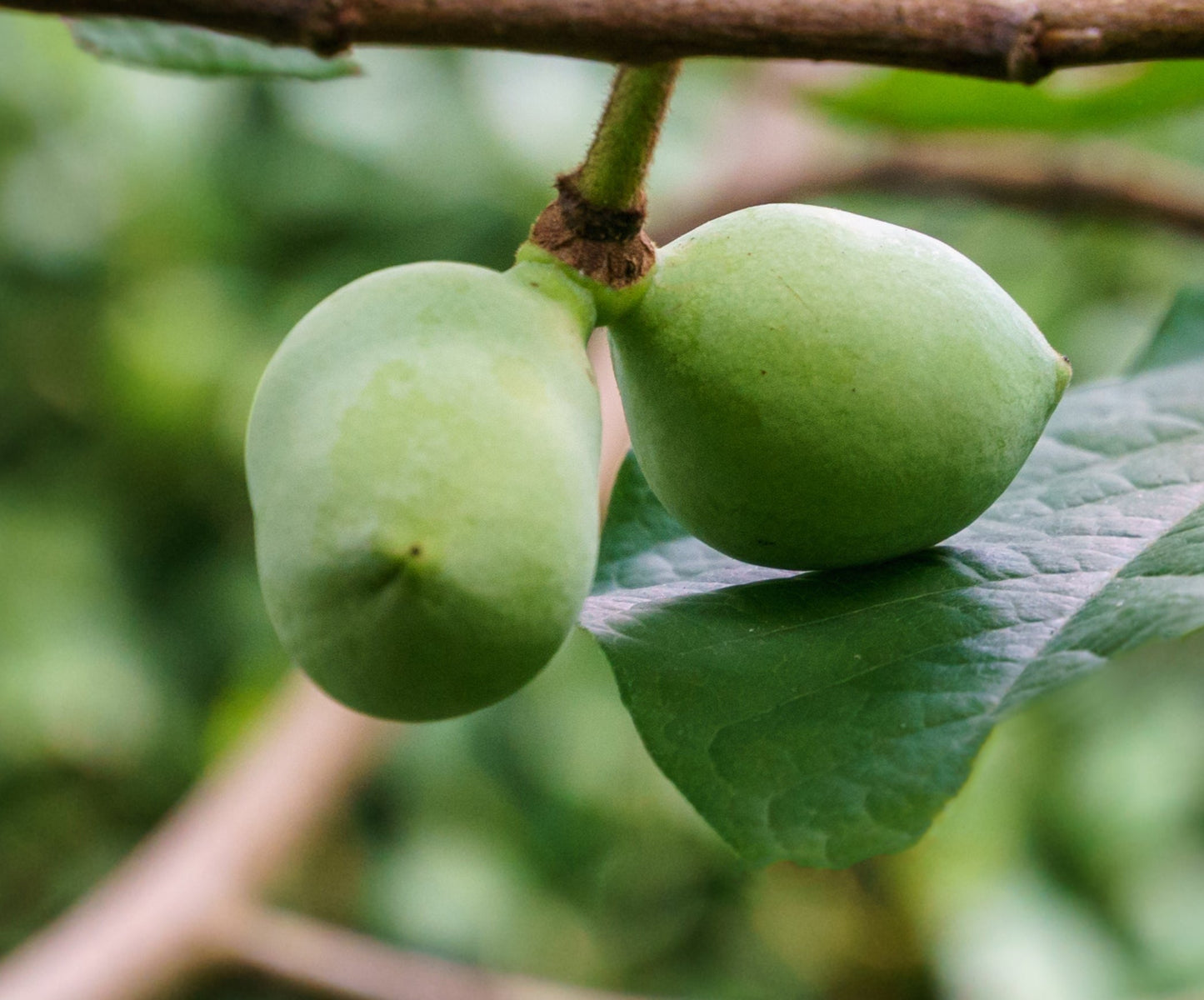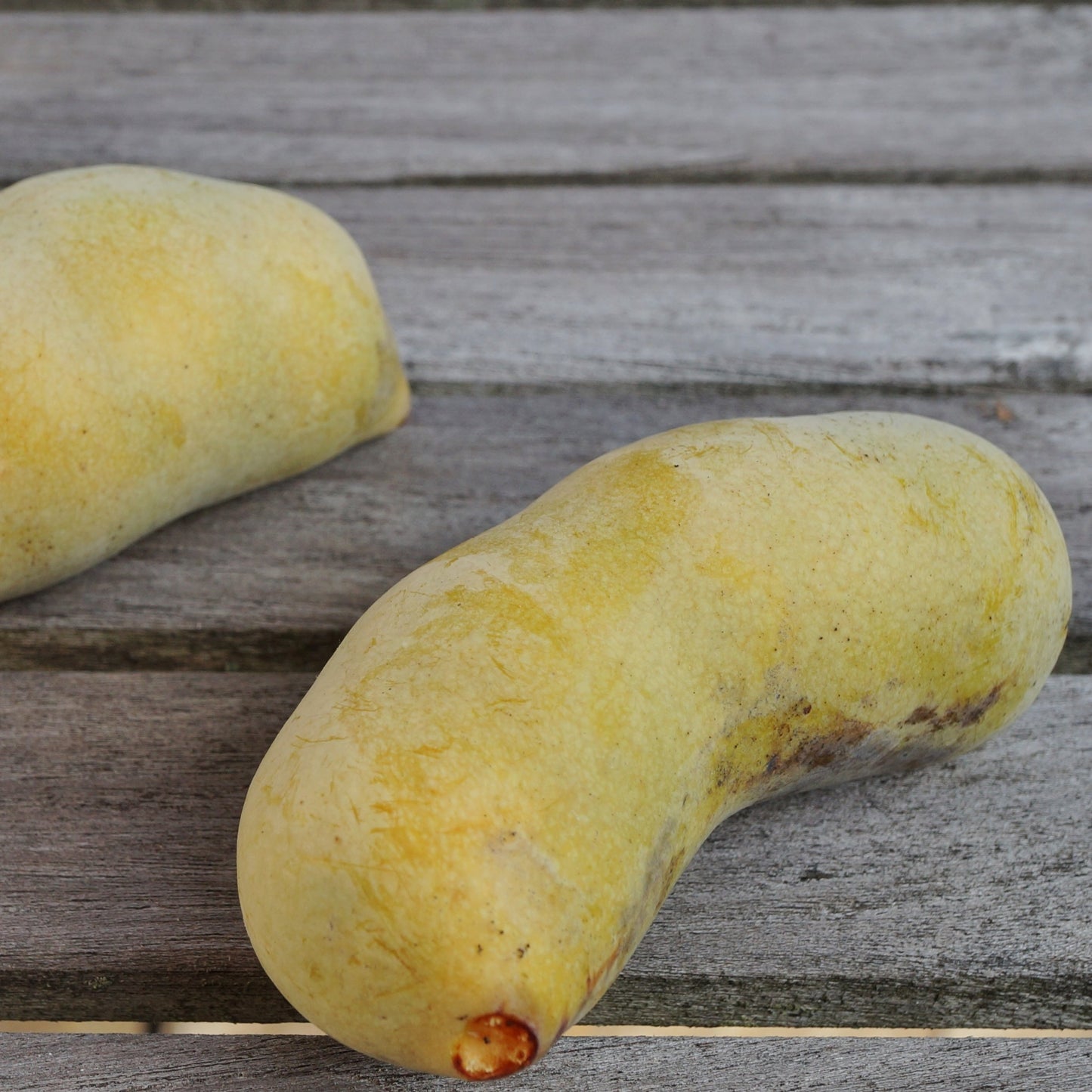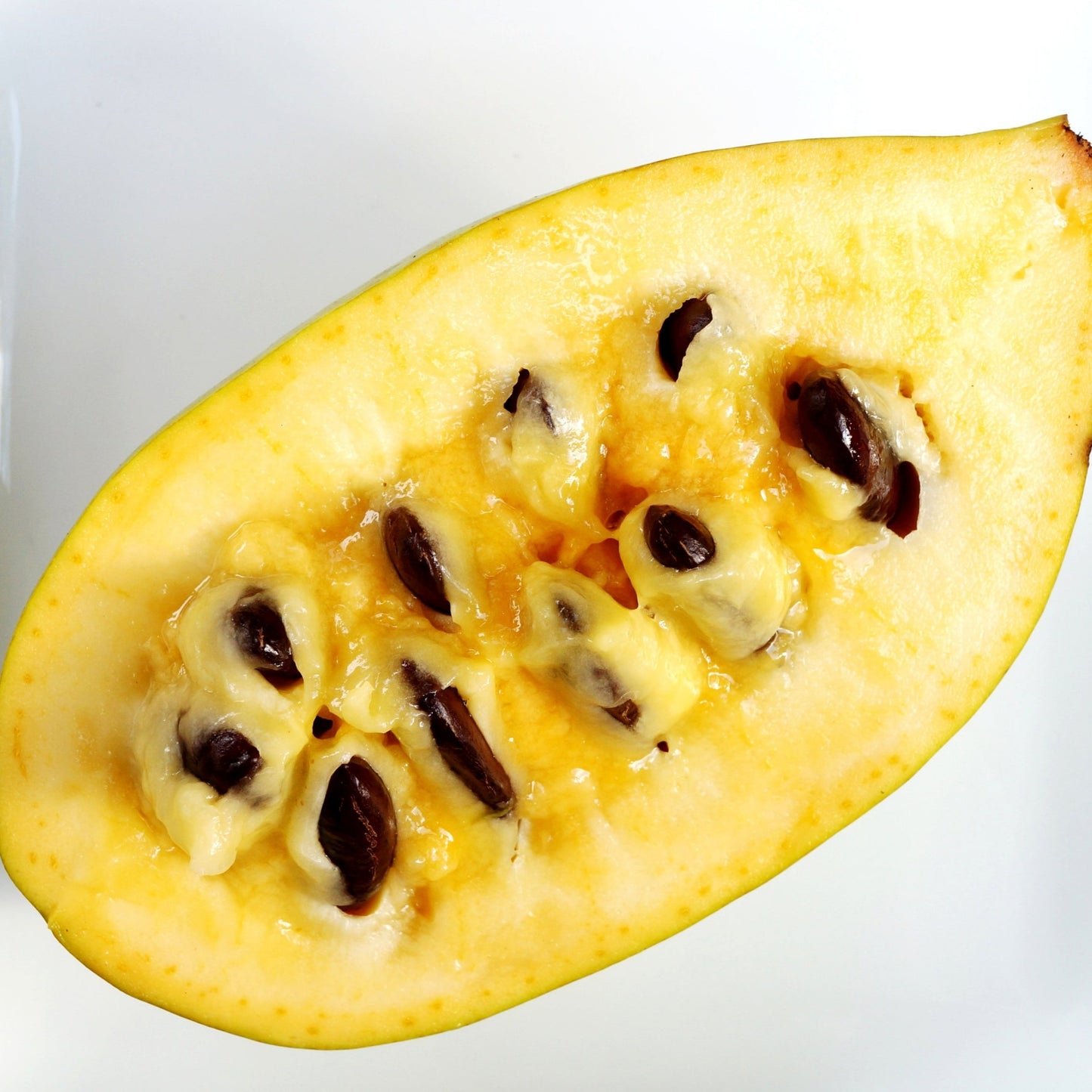Limited Quantities - Reserve Now For Fall
Paw Paw Tree
Paw Paw Tree
Couldn't load pickup availability
Asimina triloba
The American Pawpaw Tree is a unique, tropical-like fruit tree native to North America, known for its custard-like, banana-mango flavored fruit and striking foliage. This cold-hardy, shade-tolerant tree thrives in moist, well-drained soils, making it a perfect choice for home orchards, edible landscapes, and naturalized settings. As the largest native fruit-bearing tree in North America, the Pawpaw provides delicious, nutritious fruit and valuable environmental benefits.
American Pawpaw Tree
| Attribute | Details |
|---|---|
| Variety | Rooted |
| Botanical Name | Asimina triloba |
| Common Names | American Pawpaw, Custard Apple, Prairie Banana |
| Mature Height | 15-30 feet |
| Mature Width | 10-20 feet |
| Growth Rate | Moderate (1-2 feet per year) |
| Lifespan | 40-100 years |
| USDA Hardiness Zones | 5-9 |
| Sun Preference | Full sun to partial shade (best fruit production in full sun) |
| Soil Type | Well-drained, loamy, rich organic soil |
| Soil pH | Slightly acidic to neutral (5.5-7.0) |
| Water Needs | Moderate; prefers consistent moisture but tolerates short droughts |
| Flowering Season | Spring (April-May) |
| Flower Color | Deep maroon to purple |
| Fruit Ripening | Late summer to early fall (August-October) |
| Fruit Characteristics | Greenish-yellow skin, soft orange flesh with tropical flavors |
| Wildlife Attraction | Butterflies, pollinators, mammals, birds |
| Growth Habit | Small, upright tree with broad, drooping leaves |
| Self-Pollinating? | No, requires two or more trees for cross-pollination |
| Chill Hours | 400-700 hours |
| Landscape Uses | Home orchards, edible landscapes, wildlife gardens, understory plantings |
| Maintenance Level | Low |
Environmental Benefits
🐝 Pollinator Support – Produces nectar-rich flowers that attract specialized pollinators, including flies and beetles.
🌳 Erosion Control & Soil Improvement – Thrives in moist woodland soils, helping stabilize riverbanks and prevent erosion.
🦋 Wildlife Habitat – Serves as a host plant for zebra swallowtail butterfly caterpillars, contributing to local biodiversity.
🍏 Sustainable & Organic-Friendly – Naturally pest-resistant, reducing the need for chemical treatments.
Pros & Cons
| Pros | Cons |
|---|---|
| Produces unique, tropical-flavored fruit high in nutrients | Requires at least two trees for cross-pollination |
| Highly pest and disease-resistant | Short shelf life of fruit, making commercial production difficult |
| Shade-tolerant and adaptable to woodland settings | Flowers have a mildly unpleasant odor to attract pollinators |
| Low-maintenance once established | Slow initial growth before developing fruit |
| Attracts pollinators and wildlife | Delicate fruit bruises easily, requiring gentle handling |
Planting & Care Guide
- Spacing: Plant 10-20 feet apart for optimal cross-pollination and fruit production
- Soaking: Soak roots in water for 6-12 hours before planting
- Planting Depth: Dig a hole twice the width of the root system, ensuring roots are level with the soil surface
- Mulching: Apply a 2-3 inch layer of mulch to retain moisture and suppress weeds
- Pruning: Minimal pruning required; remove dead or weak branches in late winter
- Fertilization: Use a balanced fertilizer in early spring to support healthy growth
- Watering: Water deeply once or twice a week in dry conditions to maintain soil moisture
The American Pawpaw Tree is a one-of-a-kind fruit tree that brings tropical flavors to temperate gardens. Whether grown for home orchards, wildlife support, or as a native understory tree, this low-maintenance, disease-resistant tree is a valuable and rewarding addition to any edible landscape.
Share








